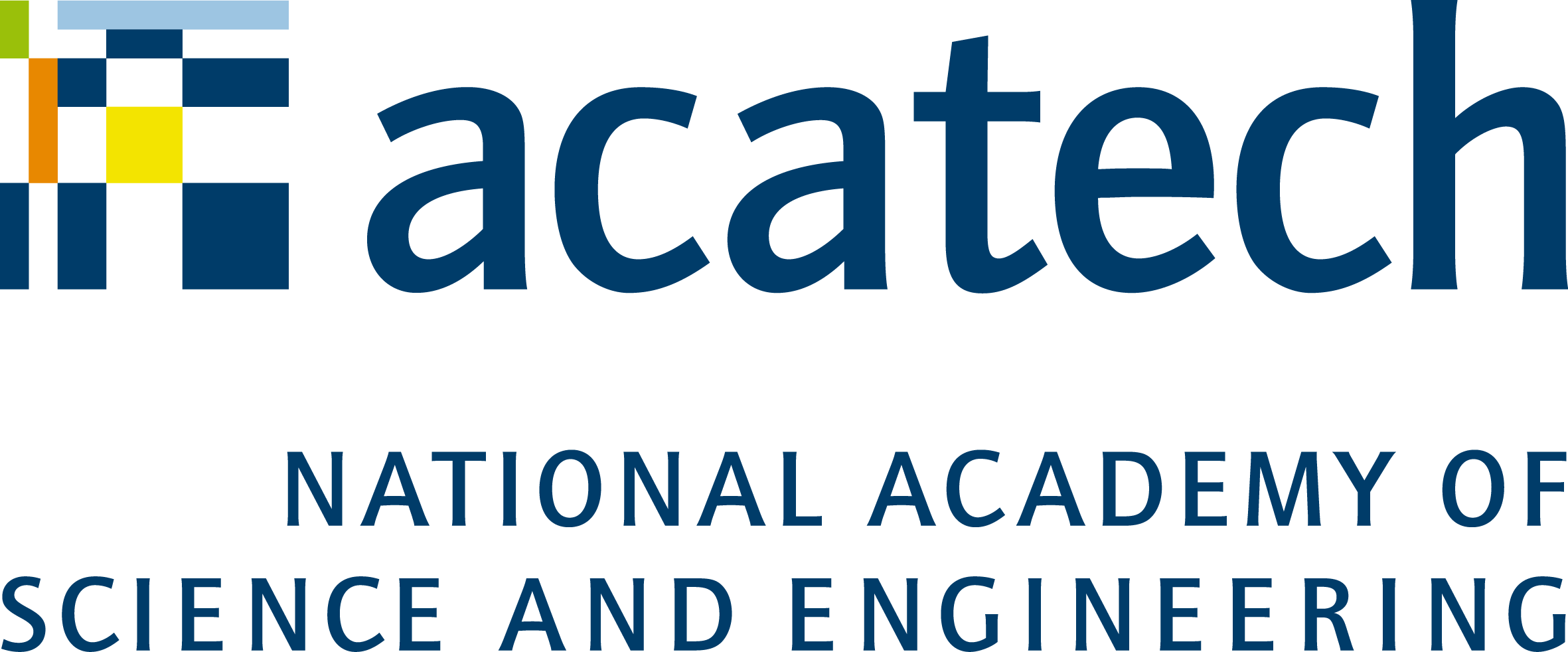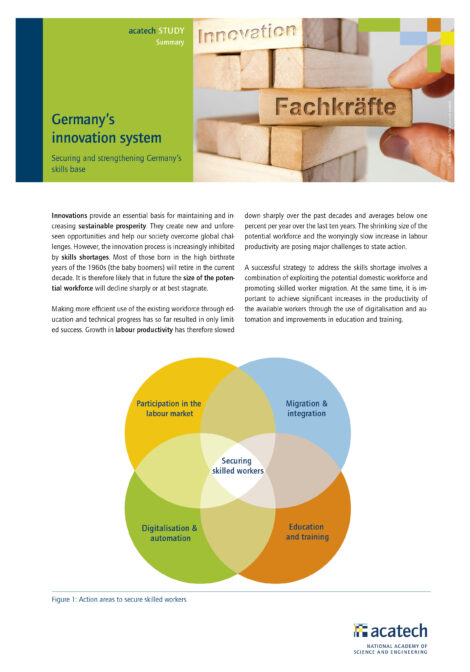Germany’s Innovation System: Securing and Strengthening Germany’s Skills Base
Skilled labour is essential at all stages of the innovation process; from discovery to realisation and on to distribution of the innovation. The growing challenge of finding skilled labour is mentioned as one of the most common barriers to innovation. To maintain and enhance Germany’s innovative strength, it is crucial to secure the supply of skilled labour across the board. Conducted as part of the project “Germany’s innovation system”, the acatech STUDY explores how suitable frameworks should be put in place to support skilled labour security, as it is key to maintaining and enhancing Germany’s innovative strength.
Based on empirical findings, the study brings together the perspectives of various stakeholders in Germany’s innovation system, which were obtained in qualitative interviews, and formulates options for action for policy makers. Specifically, the study highlights labour market potential at home and abroad, the potential of digitalisation and automation as well as education and training as factors in securing skilled labour. Here is an overview of the results of the four areas of action.
Supporting skilled labour security in Germany
Projection of the size of the potential workforce
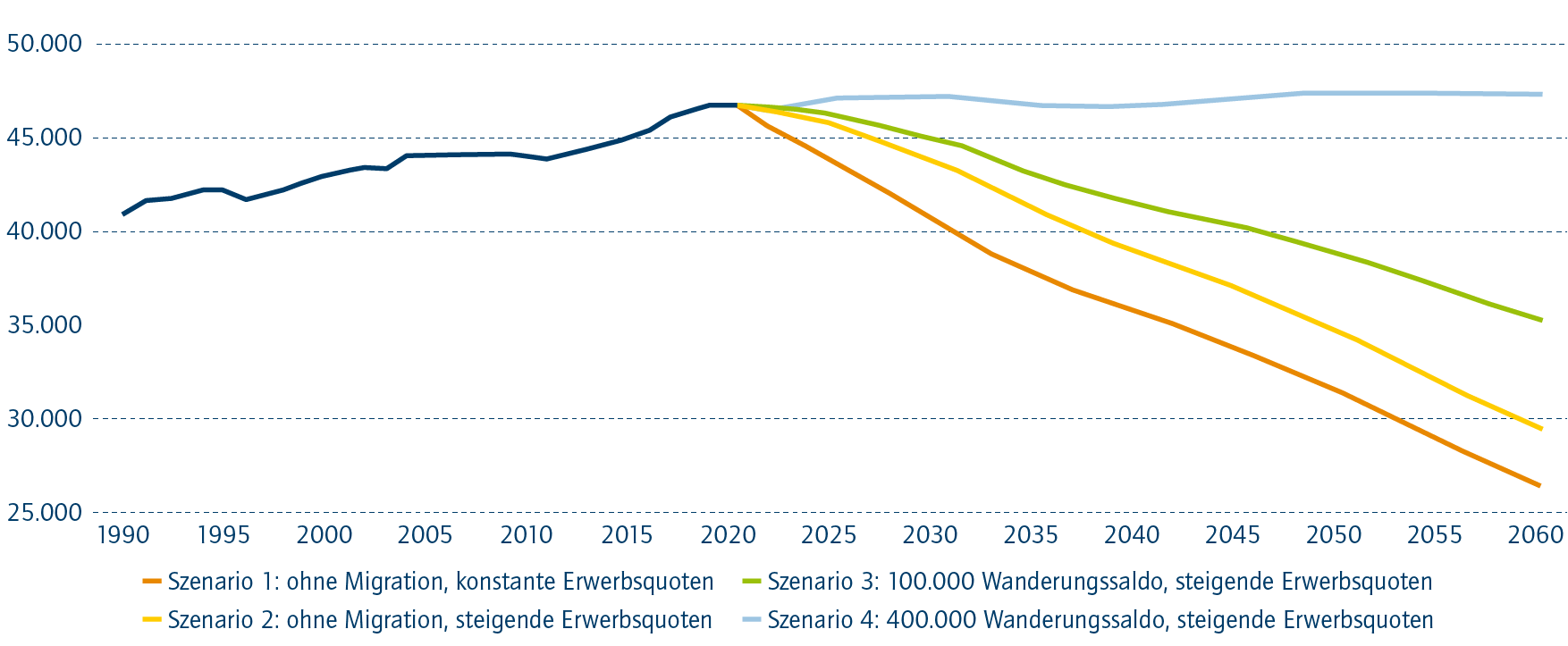
When the baby boomer generation born in the 1960s retires, it is likely that in future the size of the potential workforce will fall or, at best, stagnate, depending on domestic employment rates and net migration.
Analysis of skills shortage
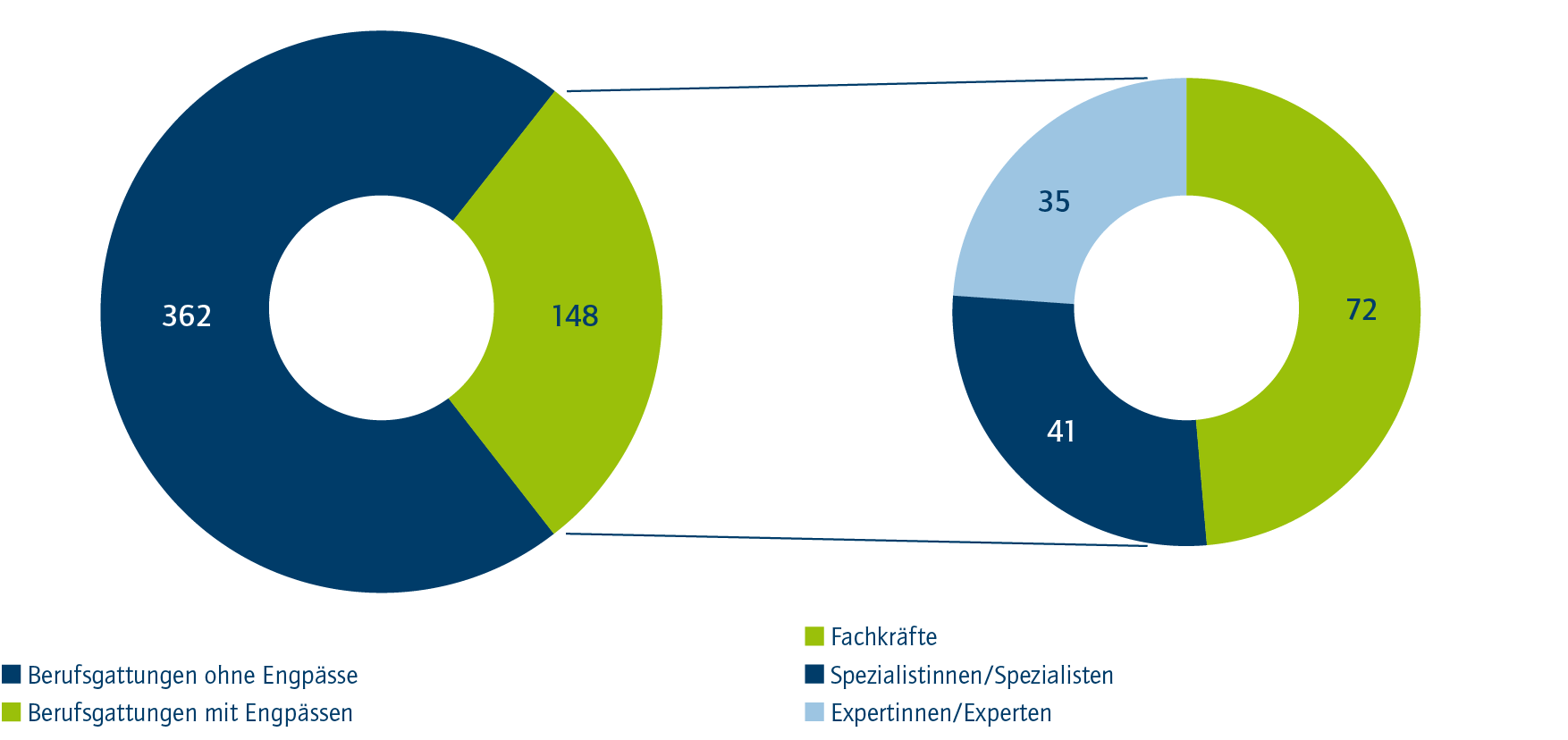
The analysis of the skills shortage from the German Federal Employment Agency found shortages in 148 of 510 occupations for the year 2021. The skills shortages are not concentrated in certain levels of qualification.
Development of labour productivity
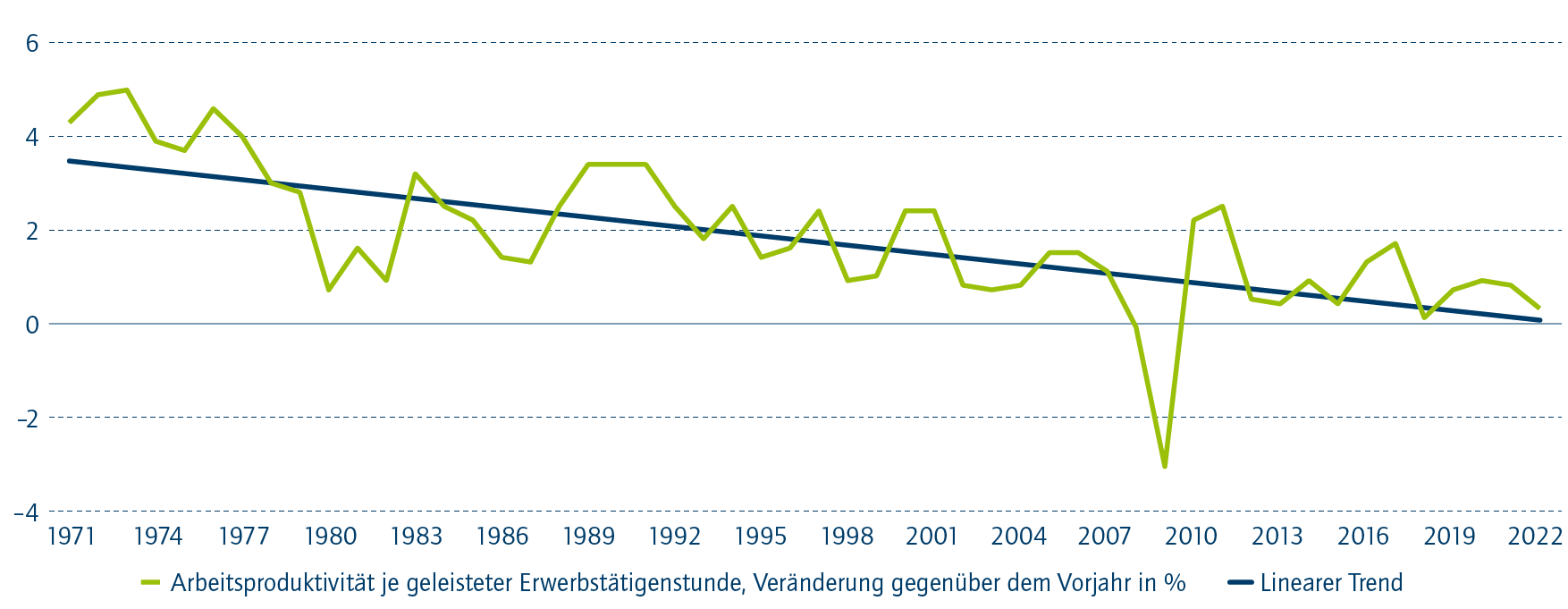
Growth in labour productivity in the labour market has slowed greatly in recent decades. It is therefore not to be expected that increases in labour productivity will make up for the reduction in the size of the potential workforce and the consequent suppression of growth and innovation.
Participation in the labour market
Domestic labour market potential
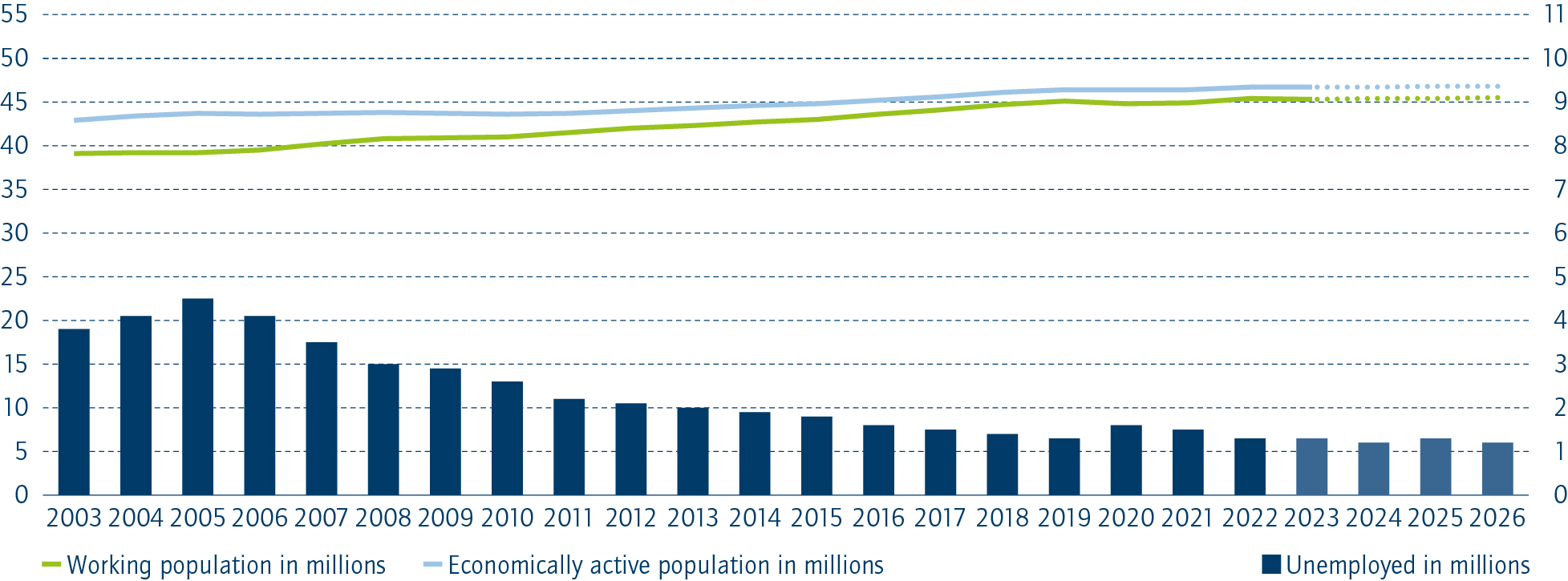
The employment rate was at its highest ever in 2022, at 45.4 million. The unemployment rate, at 1.3 million, is below the pre-crisis level of 2020. Thus, the domestic potential to increase the volume of work has largely been fully exploited.
Reduce (long-term) unemployment further
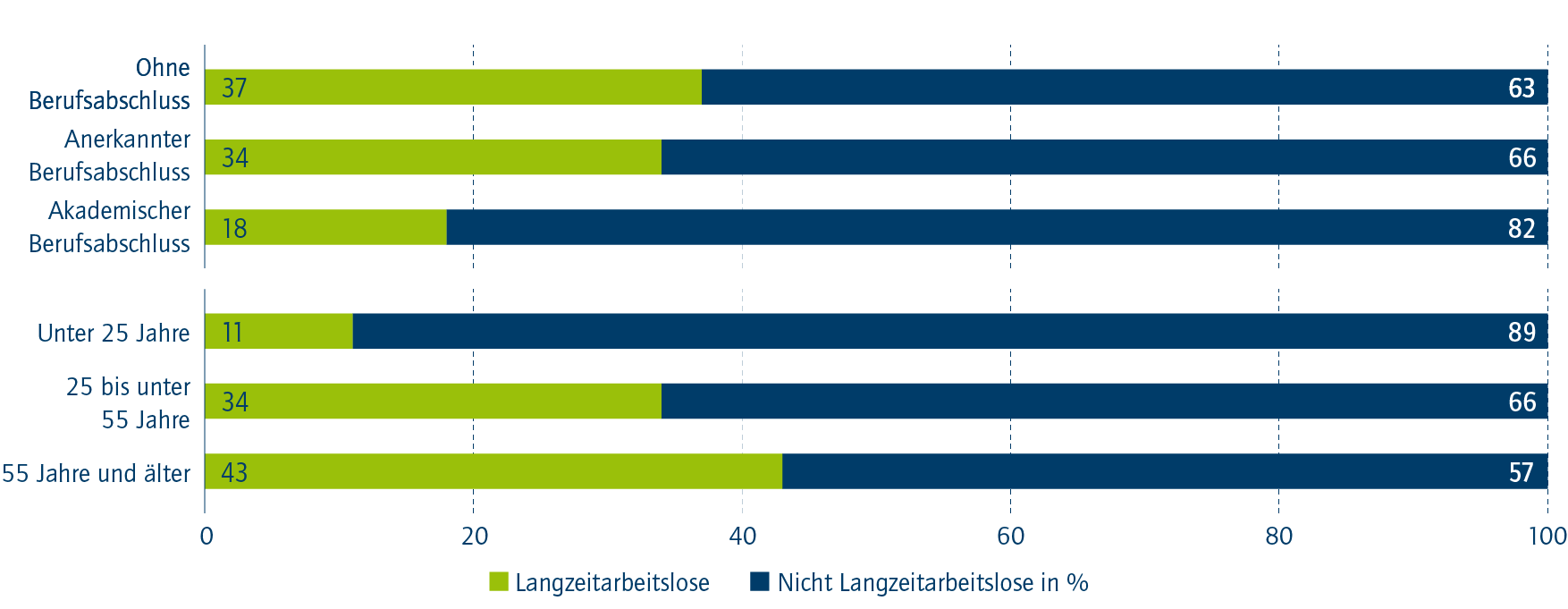
In 2022, around 900,000 people were long-term unemployed. Older people and the low-skilled are affected disproportionately more. Other factors, such as health issues or poor language skills, make it difficult to take up work. In order to maximise the realisation of domestic potential, it is important to tap the potential of the (long-term) unemployed.
Selected options for action:
- Use AI-based matching in the placement of job seekers.
- Introduce degressive phase-out models for support measures.
- Consider permanent support for people with disabilities.
Make full-time employment possible and more attractive
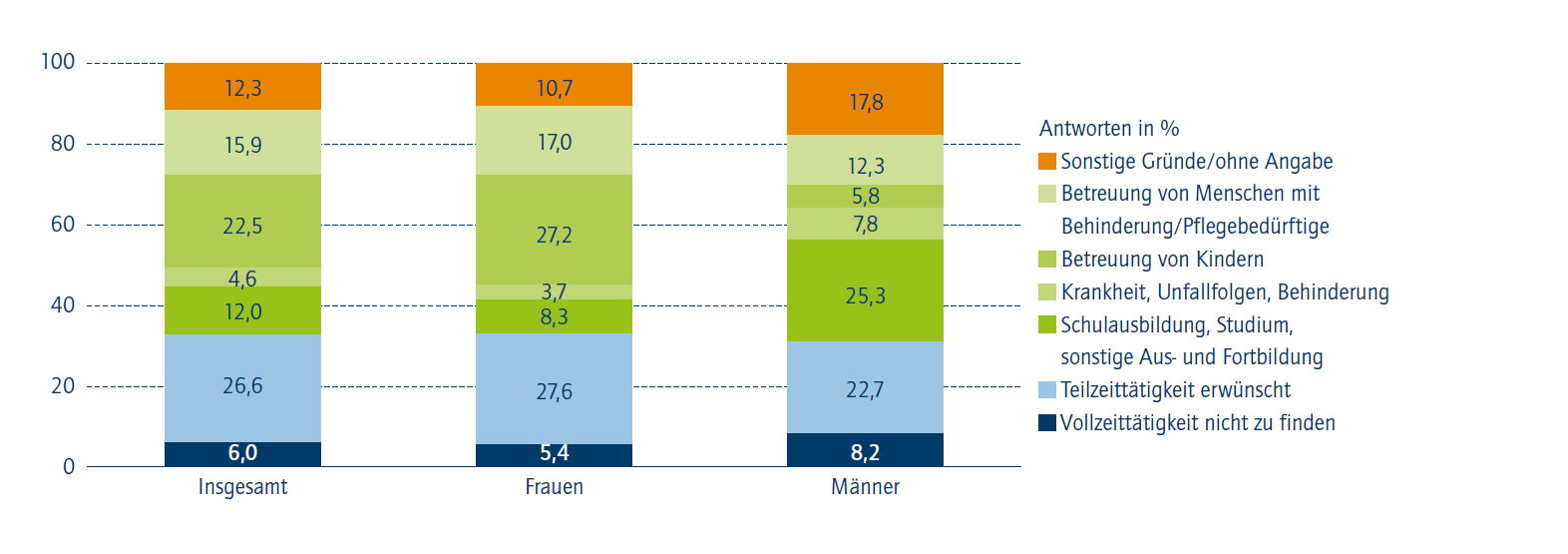
Many people have part-time or marginal employment even though they would like to work full-time. In 2022, 12.6 per cent of working males paying mandatory social security contributions and 49.6 per cent of working females paying mandatory social security contributions worked part-time. The main reason why more women work part-time is that they are more involved in minding and caring for children and family members.
Selected options for action:
- Expand the childcare and adult care infrastructure.
- Reform the joint taxation of married couples towards a de facto splitting of tax with a lower transfer amount from one spouse to the other.
- Restrict “mini-jobs” to pupils, students and retirees.
Realise the potential of senior citizens
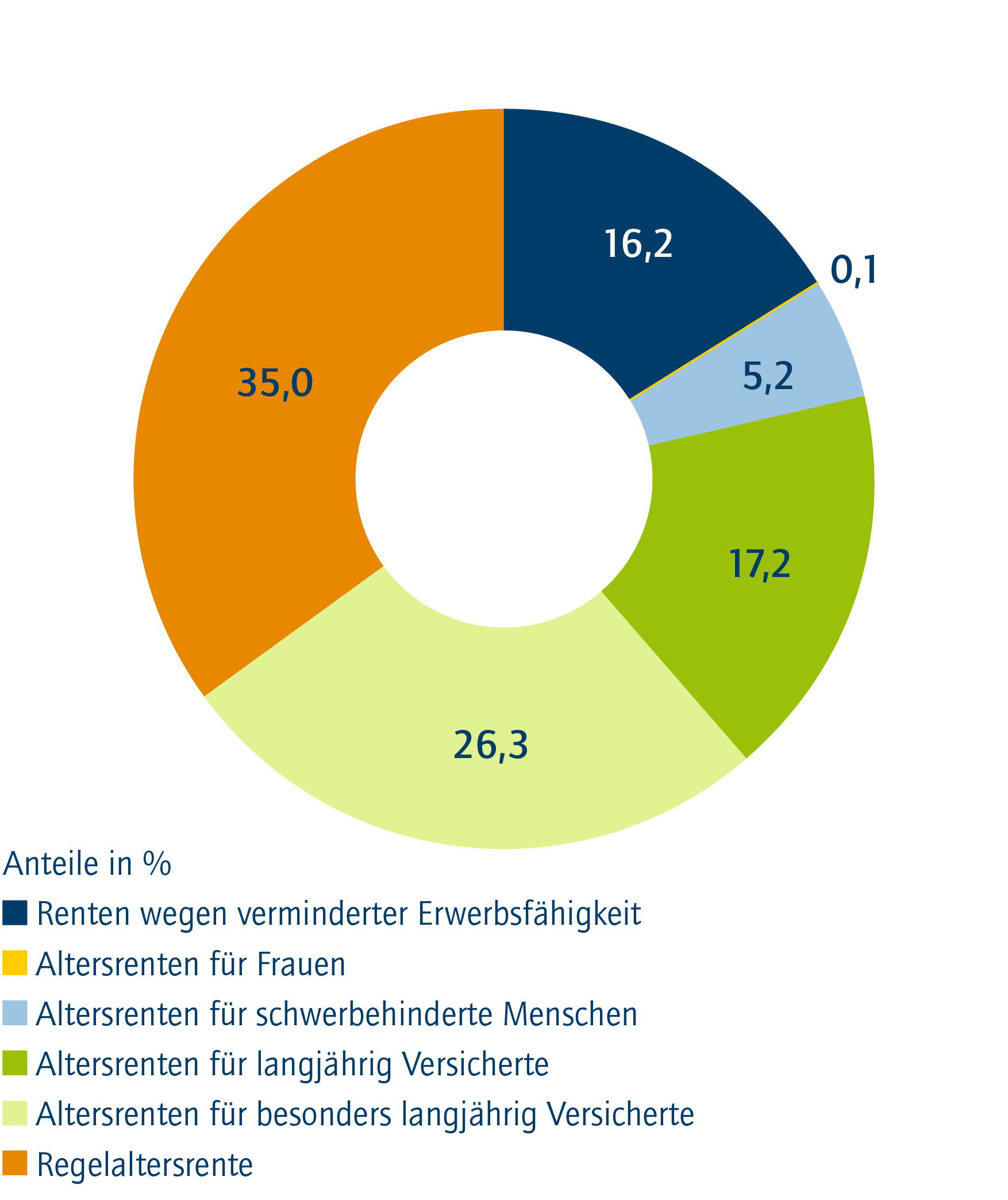
In terms of retirements from the labour force, the standard retirement age pension only accounts for a total of 35 per cent of insured person’s pensions. The majority of new retirees on the state pension are the long-term insured (35 years) or the very long-term insured (45 years). Findings show that pension deductions do not diminish the attraction of early retirement. In addition, incentives should be provided to keep older workers in the labour market for longer, including after retirement on a voluntary basis.
Selected options for action:
- Encourage debate on the abolishment of the deduction-free “pension at the age of 63” and increase pension deductions for early retirement by an appropriate amount.
- Lift the requirement to contribute to unemployment insurance for companies that employ people older than the standard retirement age.
Make working conditions and forms of employment more flexible

The costs and benefits of more flexibility depend greatly on people’s individual situations in life and work circumstances. In addition to more flexible working conditions, dynamic changes in forms of work can help to expand the supply of labour. Depending on people’s individual situations in life, they may alternate between periods of employment and self-employment. acatech’s Human Resources Working Group deals with the future of work.
Selected options for action:
- In conjunction with employee representative bodies, experiment with bringing more flexibility to working hours.
- When devising new arrangements, bear in mind occupational health and safety under flexible working conditions.
- Create legal certainty for the solo self-employed.
Migration & integration
Migration groups
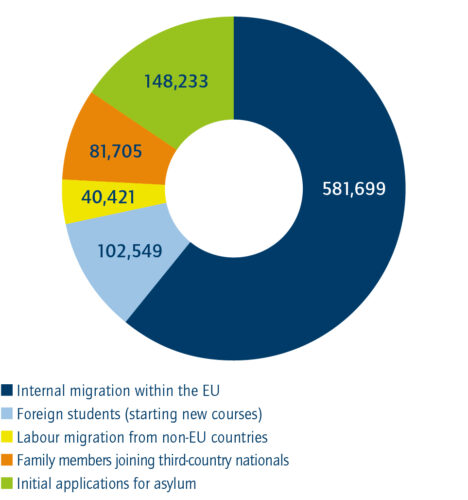
According to migration statistics, the net migration rate for 2021 was positive, at around 329,000 people. Labour migration from non-EU countries, at around 40,000, is the smallest migration category, but it is a major factor in dealing with the falling number of skilled workers as a result of demographic change. As well as realising domestic potential, the immigration of skilled workers offers huge potential for supporting skilled labour security.
Expand advertising and information campaigns abroad

Multilingual platforms are good places to communicate the opportunities of migrating to Germany as well as the processes involved. In a survey of highly qualified skilled workers, 20 per cent stated that they didn’t know which sources of information concerning migration to Germany are reliable. The creation of a network of stakeholders is key to appealing to potential economic migrants.
Selected options for action:
- Pool and promote information platforms for interested skilled workers to a greater extent.
- Fund cooperation projects for labour migration and expand them to further third countries.
Overcome language barriers

The German language is hard to learn due to its complicated grammar, and it is little used outside of German-speaking countries. The requirement for language skills for work varies greatly from sector to sector. However, to achieve long-term integration into the culture and workplace, learning the language should be encouraged both in Germany and abroad.
Selected options for action:
- Expand human resources at examination institutions abroad.
- Expand the tuition of occupation-specific language skills abroad by running suitable programmes.
Integrate international students better
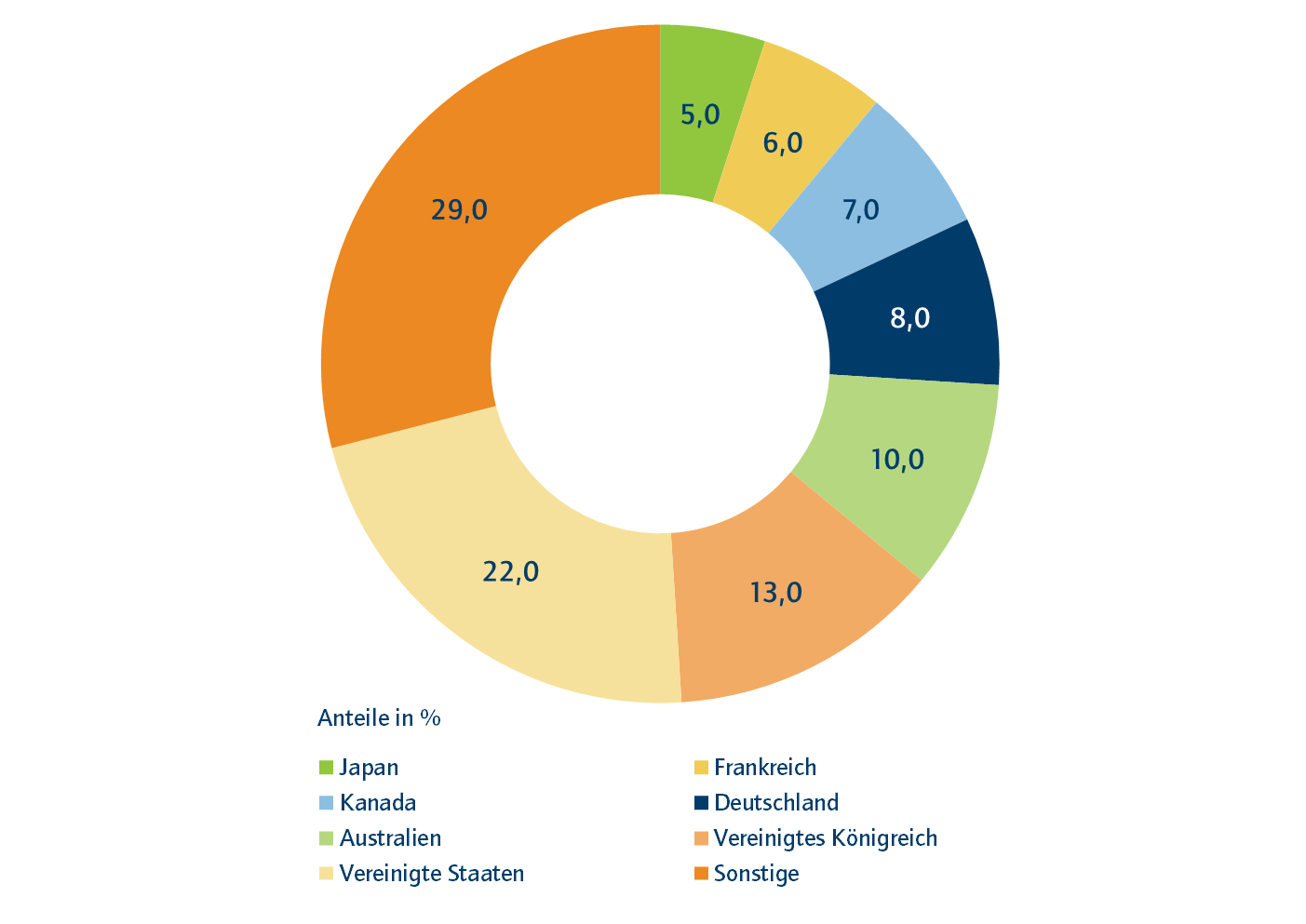
Germany is very popular with foreign students. The ten-year retention rate for international students, at 38 per cent, is one of the highest in the world. One particular challenge for international students entering the German labour market after graduation is job-hunting. Apart from their lack of work experience, they see lack of German language skills as the biggest challenge.
Selected options for action:
- Provide funding for students doing degree programmes where English is the language of instruction to learn German.
- Expand and promote guidance counselling and placement services for jobseekers.
Make it easier to integrate – consider family

The potential for labour market participation of partners from abroad, at 56 per cent at present, is far from fully realised. Internationally mobile skilled workers will only remain in Germany if they feel settled and integrated in the society. Therefore, the families of the skilled workers and the challenges they experience must be considered in the integration process.
Selected options for action:
- Provide information in their native language and important documents in English.
- Pool local migration process structures and assign the coordination to central immigration authorities.
- Offer guidance counselling and supports for accompanying family members.
Make the migration process efficient

In practice, there are many bureaucratic and social obstacles to migration. The change of perspective on migration, which has been laid down in law in many places, has not yet fully taken root in administration.
Selected options for action:
- Align public services towards facilitating migration.
- Create streamlined, digitalised and agile migration processes as well as harmonise the work of the entities involved.
- In all German states, set up central immigration authorities to coordinate economic and education-based migration.
Speed up the visa process

A visa is generally required for labour migrants from third countries to gain entry into Germany. The complex and long-drawn-out visa process is one of the biggest obstacles to immigration and makes Germany a less attractive country for skilled workers to migrate to than other countries. Accelerated and efficient visa processing is needed.
Selected options for action:
- Streamline, standardise and digitalise the documents to be submitted in the visa process.
- Check the consultation requirements of stakeholders in the visa process.
- Consider pooling visa processes in the Federal Agency for Foreign Affairs.
Simplify the recognition of qualifications

To be recognised as a skilled worker, proof of qualification is required, which must be equivalent to a qualification obtained in Germany. Depending on the occupation and location, different parties are responsible for the recognition process. This results in a highly complex and long-drawn-out recognition procedure.
Selected options for action:
- Collect knowledge about the assessment of foreign professional qualifications in a central database.
- Pool existing information and advisory services on one platform.
- Standardise the recognition processes nationally by centralising the recognition bodies around certain occupations or countries of origin.
- Group and standardise qualifications by blocks of themes.
Digitalisation & automation
Advancement of technology
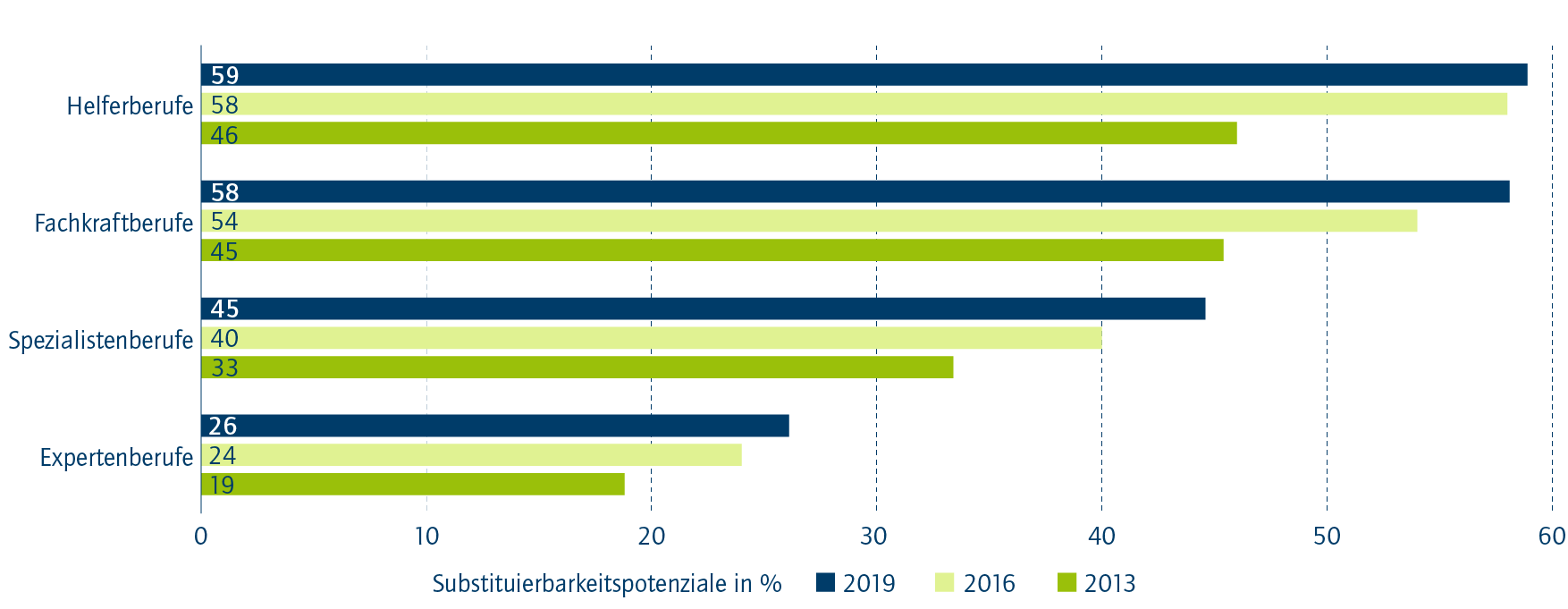
The range of jobs that can be automated and digitalised has increasingly grown as technology advances. To use new technologies, the workers in question require special skills. In 2022, there was a shortage of 137,000 IT experts across all sectors.
Anticipating the requirements for digitalisation

The basis of successful digitalisation is the corresponding infrastructure. In addition, the benefit of digitalised processes increases when partners in cooperations (other companies, state administration, customers) use the digital processes themselves. The state thus takes on the role of an enabler for the digitalisation and automation of private stakeholders.
Selected options for action:
- Accelerate the expansion of infrastructure.
- Expand data skills through training and advice.
- Cater to people without digital skills with training in or outside the workplace.
Support small and medium-sized enterprises

While digitalisation and automation are very far advanced in large companies, many small and medium-sized enterprises (SMEs) are only starting the digitalisation process. The uncertainties that exist over the potential of digitalisation and network effects in SMEs make the individual cost-benefit analysis of investments very complex.
Selected options for action:
- Raise awareness for (regional) networks and financial (state) support and lower the entry thresholds.
- Point out the potential of digitalisation for SMEs by giving practical examples.
Fundamentally digitalise government services
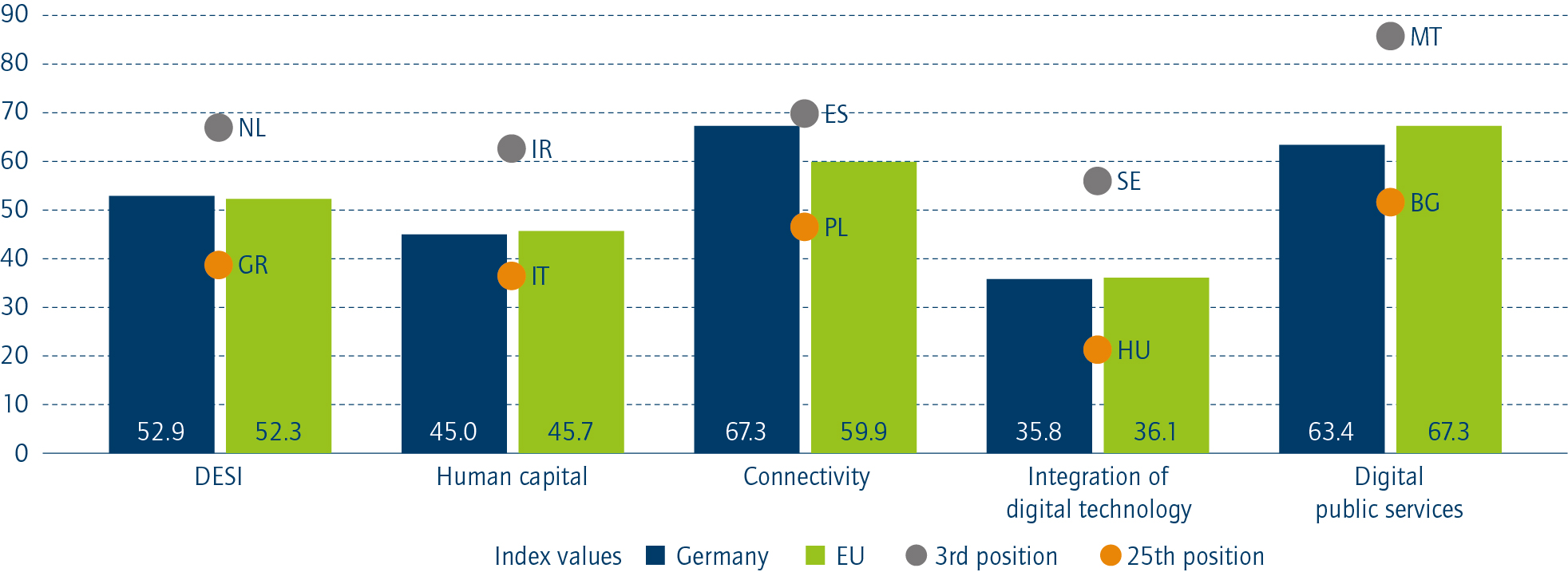
The process of digitalisation in state authorities has only begun and requires large-scale investment: in 2022, Germany was ranked 18 out of the 27 EU Member States for digital public services. As in the SME sector, there are major path dependencies due to highly interwoven non-digital processes. Furthermore, there is a lack of adequate IT skills within the state authorities to digitalise processes themselves.
Selected options for action:
- Define digital identities, standards and interfaces at national level.
- Pool decision-making power and resources in the IT Planning Council and FITKO.
- Mandate the introduction of digital working in and between authorities.
Education and training
Expand basic skills
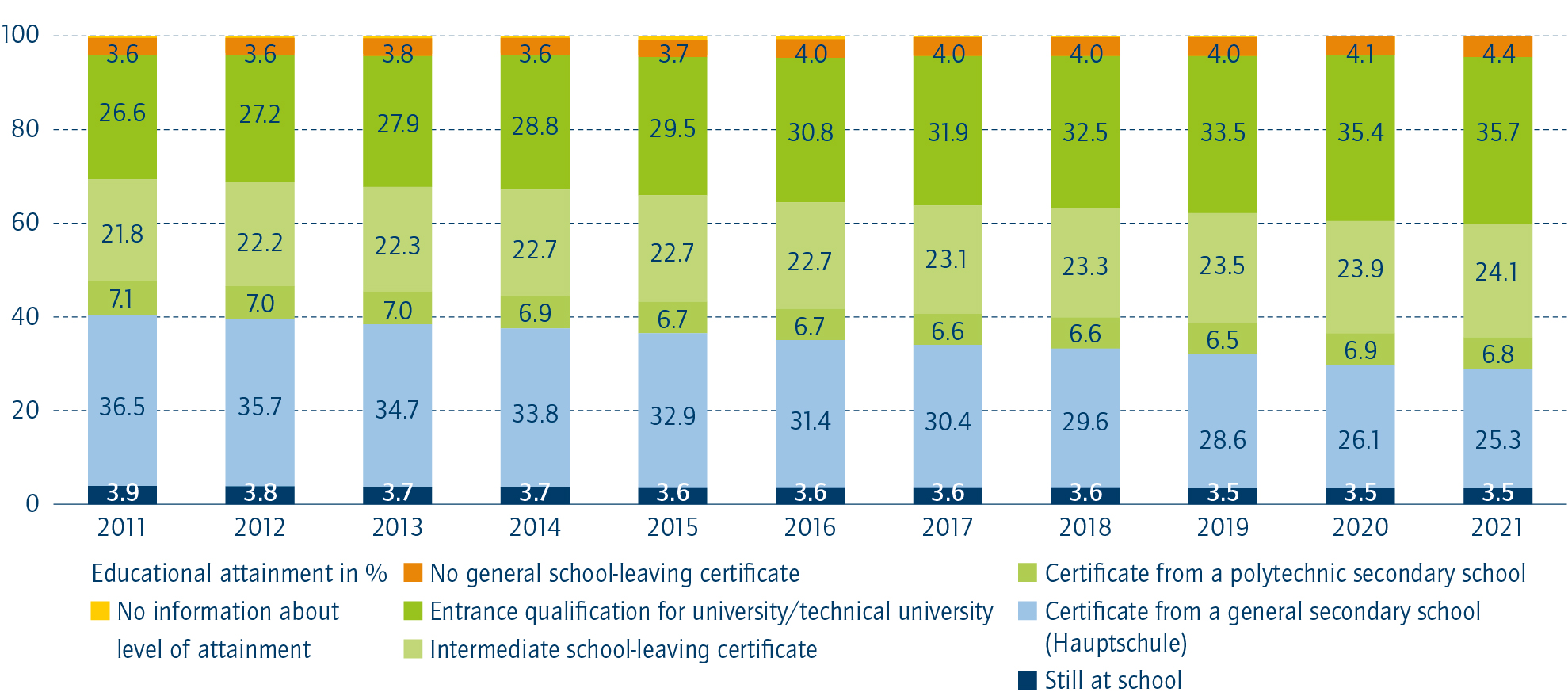
The percentage of Germans who have an entrance qualification for university/technical university rose from 26.6 to 35.7 per cent between 2011 and 2021. In the same period, the percentage of Germans with a certificate from a general secondary school (Hauptschule) fell from 36.5 to 25.3 per cent. While the percentage of higher school qualifications has risen, there are distinct differences in skill levels among the students, which show clear need for action.
Selected options for action:
- Fund the acquisition of basic skills, especially in the STEM sector.
- Provide students with hardware for digital lesson contents.
- Reinforce technical and digital skills in teacher training and further professional development.
- Expand funding for people to return to education to obtain a general school-leaving certificate.
Teach career planning skills

People need comprehensive career planning skills in order to decide on a specific career. They are introduced to such skills as children by awakening their interests. Ideally, practical lessons in school that support career planning should build on this introduction.
Selected options for action:
- Combine teaching content with work placements or university foundation-level courses as part of the curriculum.
- Provide insights into day-to-day work in companies for teachers.
- Coordinate regional educational projects and networks at state or national level.
- Make key labour market indicators such as wage and employment developments transparent and easy to understand.
Facilitate and fund lifelong learning
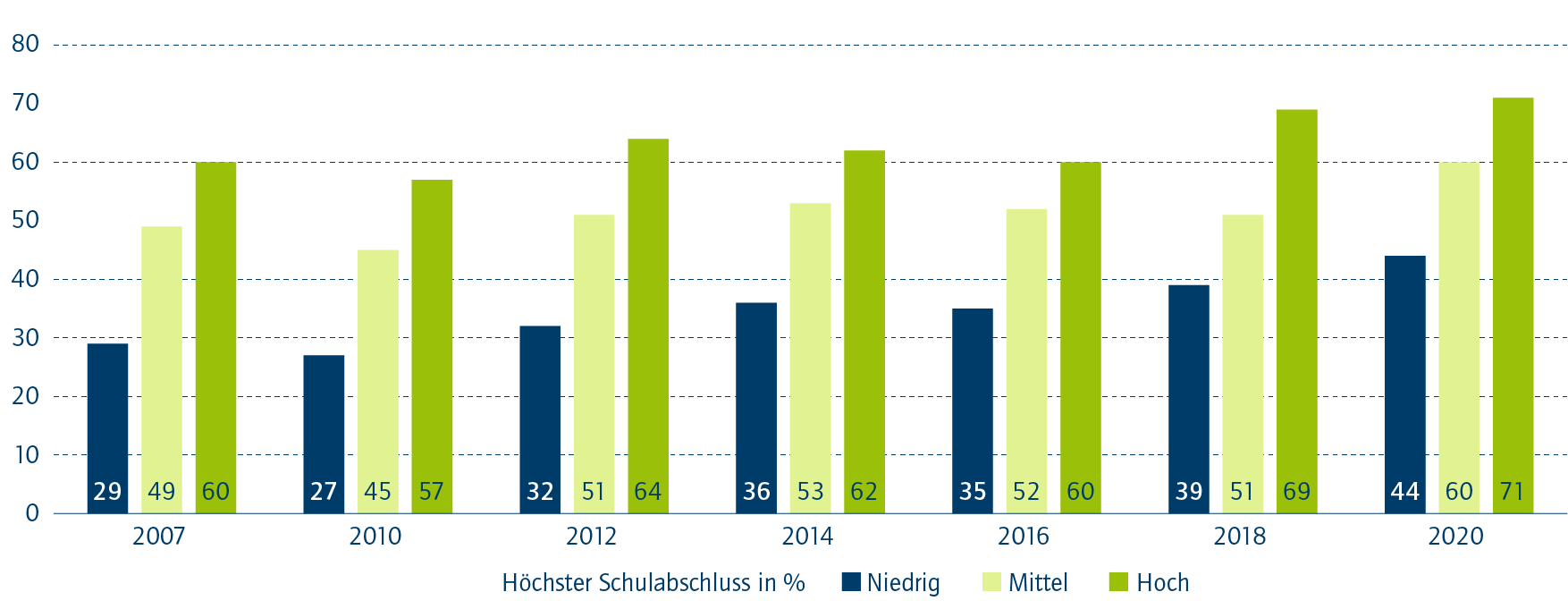
Participation in further education has steadily increased, and in 2020 was 60 per cent of 18-to-64-year-olds; however, participation is very mixed and depends greatly on the person’s educational background. Lifelong learning, which complements a person’s schooling and vocational education and training and takes the form of additional training courses, further education and informal learning, helps to respond to dynamic changes in labour market requirements.
Selected options for action:
- Integrate basic digitalisation skills in all educational pathways.
- Fund low-threshold education and training opportunities for the low-skilled.
- Create information and further education opportunities for employees in the workplace.
Use modularity to interlink educational pathways

Structuring education in the form of one big block reduces workers’ flexibility to react as their needs change in the course of their careers. Aligning training towards the possibility of building on and applying content to other contexts by having modular education and training courses is likely to entail less investment and path dependencies.
Selected options for action:
- Make it easier to switch between training pathways by having modular course content.
- Define parameters for certifying complete and part qualifications.
- Concentrate state funding on basic education modules and fully-fledged professional qualifications.
Pool further education offerings on a central platform

Education funding varies greatly due to the federal nature of education policy. The multitude of education policy measures and public and private advisory services that exists lead to a lack of transparency and diminish the effect of these further education offerings.
Selected options for action:
- Establish a unified further education platform.
- Pool further education options and state funding across the board.
Sources
Bitkom e.V. 2022
Bitkom e.V.: Trotz Krieg und Krisen: In Deutschland fehlen 137.000 IT-Fachkräfte, 2022. URL: https://www.bitkom.org/Presse/Presseinformation/Deutschland-fehlen-137000-IT-Fachkraefte [as at: 19.04.2023].
Dengler/Matthes 2018
Dengler, K./Matthes B.: Substituierbarkeitspotenziale von Berufen: Wenige Berufsbilder halten mit der Digitalisierung Schritt. IAB-Kurzbericht 04/2018, Nürnberg: Institut für Arbeitsmarkt- und Berufsforschung (IAB) 2018. URL: https://doku.iab.de/kurzber/2018/kb0418.pdf
Dengler/Matthes 2021
Dengler, K./Matthes B.: Folgen des technologischen Wandels für den Arbeitsmarkt: Auch komplexere Tätigkeiten könnten zunehmend automatisiert werden. IAB-Kurzbericht 13/2021, Nürnberg: Institut für Arbeitsmarkt- und Berufsforschung (IAB) 2021. URL: https://doku.iab.de/kurzber/2021/kb2021-13.pdf
Deutsche Rentenversicherung Bund 2022
Deutsche Rentenversicherung (Ed.): Rentenversicherung in Zahlen, Berlin 2022. URL: https://www.deutsche-rentenversicherung.de/SharedDocs/Downloads/DE/Statistiken-und-Berichte/statistikpublikationen/rv_in_zahlen.html
European Commission 2022
European Commission: The Digital Economy and Society Index – Countries’ performance in digitisation, 2022. URL: https://digital-strategy.ec.europa.eu/en/policies/countries-digitisation-performance [as at: 16.09.2022].
Federal Statistical Office of Germany 2020
Statistisches Bundesamt (Destatis): Bildungsstand, 2020. URL: https://www.destatis.de/DE/Themen/Gesellschaft-Umwelt/Bildung-Forschung-Kultur/Bildungsstand/Tabellen/bildungsabschluss.html [as at: 25.11.2020].
Federal Statistical Office of Germany 2022
Statistisches Bundesamt (Destatis): Ein Drittel der internationalen Studierenden bleibt langfristig in Deutschland, 2022b. URL: https://www.destatis.de/DE/Presse/Pressemitteilungen/2022/10/PD22_435_12.html [Stand: 19.04.2023].
Federal Statistical Office of Germany 2023a
Statistisches Bundesamt (Destatis): Arbeitsproduktivität je Erwerbstätigenstunde von 1971 – 2022. Tabelle 1.14 Arbeitsproduktivität, Durchschnittslöhne und Lohnstückkosten. In: Volkswirtschaftliche Gesamtrechnungen, Wiesbaden: 2023a. URL: https://www.destatis.de/DE/Themen/Wirtschaft/Volkswirtschaftliche-Gesamtrechnungen-Inlandsprodukt/Publikationen/Downloads-Inlandsprodukt/inlandsprodukt-lange-reihen-pdf-2180150.pdf?__blob=publicationFile [as at: 17.05.2023].
Federal Statistical Office of Germany 2023b
Statistisches Bundesamt (Destatis): Bevölkerung und Erwerbstätigkeit (Inländer), Zeitreihe, 2023b. URL: https://www.destatis.de/DE/Themen/Arbeit/Arbeitsmarkt/Erwerbstaetigkeit/Tabellen/liste-bevoelkerung-erwerbstaetigkeit.html [as at: 19.04.2023].
Federal Statistical Office of Germany 2023c
Statistisches Bundesamt (Destatis): Abhängig Erwerbstätige aus Hauptwohnsitzhaushalten: Deutschland, Jahre, Geschlecht, Altersgruppen, Beschäftigungsumfang, Genesis-Online, Datenlizenz by 2-0, 12211-0010, 2023c. URL: https://www-genesis.destatis.de/genesis/online?operation=table&code=12211-0010&bypass=true&levelindex=0&levelid=1671462820138#abreadcrumb [as at: 17.04.2023].
Federal Statistical Office of Germany 2023d
Statistisches Bundesamt (Destatis): 12211-0100 Bevölkerung ab 15 Jahren in Hauptwohnsitzhaushalten: Deutschland, Jahre, Geschlecht, Altersgruppen, Allgemeine Schulausbildung, 2023d, Genesis-Online Datenlizenz by-2-0. URL: https://www-genesis.destatis.de/genesis/online?operation=table&code=12211-0100&bypass=true&levelindex=0&levelid=1680620275770#abreadcrumb [as at: 16.01.2023].
Federal Statistical Office of Germany 2023e
Statistisches Bundesamt (Destatis): Strukturdaten über sozialversicherungspflichtig Beschäftigte am Arbeitsort, 2023e. URL: https://www.destatis.de/DE/Themen/Arbeit/Arbeitsmarkt/Erwerbstaetigkeit/Tabellen/strukturdaten.html [as at: 16.01.2023].
Fuchs et al. 2021
Fuchs, J./Söhnlein D./ Weber B.: Projektion des Erwerbspersonenpotenzials bis 2060: Demografische Entwicklung lässt das Arbeitskräfteangebot stark schrumpfen, IAB-Kurzbericht, 25, 2021. URL: https://doku.iab.de/kurzber/2021/kb2021-25.pdf
German Federal Employment Agency 2022
Bundesagentur für Arbeit: Fachkräfteengpassanalyse 2021, 2022. URL: https://statistik.arbeitsagentur.de/SiteGlobals/Forms/Suche/Einzelheftsuche_Formular.html?nn=27096&topic_f=fachkraefte-engpassanalyse
German Federal Employment Agency 2023
Bundesagentur für Arbeit: Langzeitarbeitslosigkeit, 2023. URL: https://statistik.arbeitsagentur.de/DE/Navigation/Statistiken/Interaktive-Statistiken/Langzeitarbeitslosigkeit/Langzeitarbeitslosigkeit-Nav.html [as at: 19.04.2023].
German Federal Ministry of Education and Research 2022
Bundesministerium für Bildung und Forschung (BMBF): Weiterbildungsverhalten in Deutschland 2020, Ergebnisse des Adult Education Survey — AES-Trendbericht, 2022. URL: https://www.bmbf.de/SharedDocs/Publikationen/de/bmbf/1/31690_AES-Trendbericht_2020.pdf?__blob=publicationFile&v=9
German Federal Ministry of Labour and Social Affairs 2022
Bundesministerium für Arbeit und Soziales (BMAS): Fachkräftemonitoring für das BMAS: Mittelfristprognose bis 2026, 2022. URL: https://www.bmas.de/DE/Service/Publikationen/Forschungsberichte/fb602-fachkraeftemonitoring-fuer-das-bmas.html
German Federal Ministry of the Interior and Community 2022
Bundesministerium des Innern und für Heimat (BMI) (Hrsg.)/Bundesamt für Migration und Flüchtlinge (BAMF): Migrationsbericht der Bundesregierung. Migrationsbericht 2021, Berlin: 2022. URL: https://www.bamf.de/SharedDocs/Anlagen/DE/Forschung/Migrationsberichte/migrationsbericht-2021.pdf;jsessionid=6C15C83D345605B290E198E989E56C30.intranet261?__blob=publicationFile&v=13
Liebig/Senner 2022
Liebig, T./ Senner, A.S.: Your Way to Germany. Ergebnisse einer Onlinebefragung unter Fachkräften im Ausland. OECD 2022. URL: https://blog.oecd-berlin.de/wp-content/uploads/2022/12/Brief-on-Your-way-to-Germany-survey_011122-1.pdf
Maciejewski/Harder 2022
Maciejewski, L./Harder, N.: Überqualifiziert und un(ter)beschäftigt: Potenziale nachziehender Partner*innen für den deutschen Arbeitsmarkt, Berlin: Deutsches Zentrum für Integrations- und Migrationsforschung (DeZIM) 2022. URL: https://www.dezim-institut.de/fileadmin/user_upload/Demo_FIS/publikation_pdf/FA-5329.pdf
OECD 2022
OECD: International Migration Outlook 2022, Paris: OECD Publishing 2022. DOI: https://doi.org/10.1787/30fe16d2-en.
